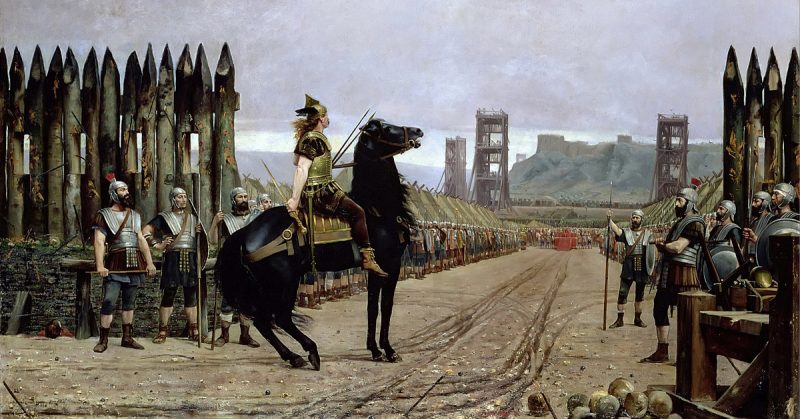The Gallic wars were a series of battles that ensued when the Gallic people of what is now France stood in resistance to the invading Roman Army. The wars, which took place from 58 BC to 50 BC, resulted in a victory for the Romans and the establishment of their rule over all of Gaul.
One of the campaigns led by the Roman Proconsul Julius Caesar is the Battle of Gergovia which took place in 52 BC in Gergovia, the large town of the Arveni people.
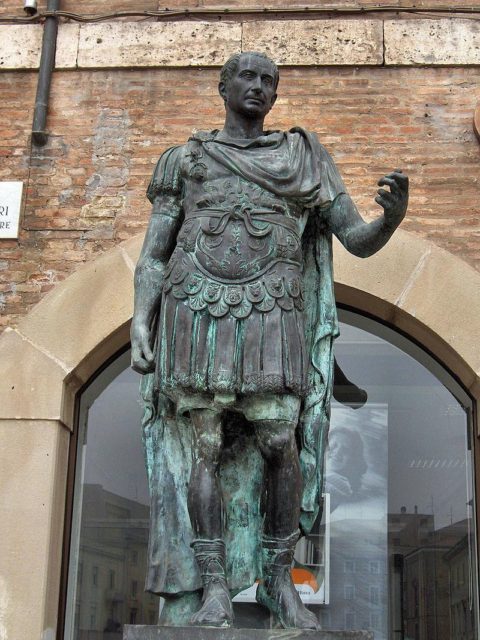
The Celtic Arveni was notably one of the most powerful tribes in Gaul and managed to stay independent of Roman rule for a while. However, their independence was soon lost due to the inability of the Gallic tribes to come together as a united force.
Separate tribes held on to their oppida (large fortified settlements) and would often fight amongst each other over real estate. Instead of joining together as a nation they were divided into small fractions and that made them easy targets for the Romans.
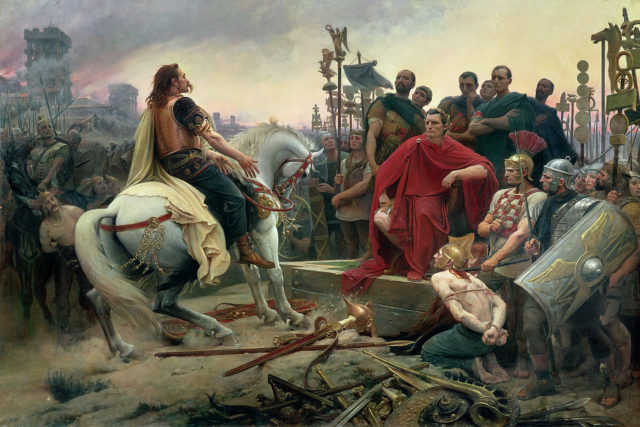
After the defeat of their king in 121 BC by the Romans, the ascendency of Gergovia shifted from the Arveni to the Aedui, who became Roman allies. The chieftain and leader of the Arveni, Vercingetorix, had a mind to unite all of Gaul but his plans were met with serious opposition from the chieftains of other tribes who did not want to be subject to a higher authority.
He was exiled from Gergovia, being a successor of the previous leadership and with his ambitious reputation, he was seen as a serious threat to the ruler of the Aedui.
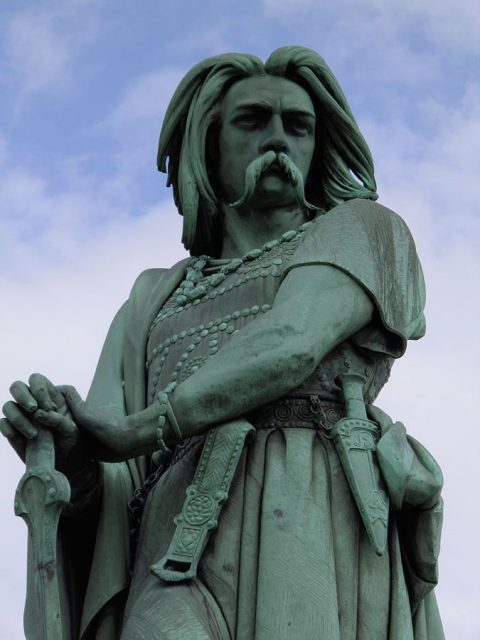
In order to regain control over the oppidum, Vercingetorix gathered his Arveni supporters and launched an attack on Gergovia in the winter of 53 BC. The Aedui resisted Vercingetorix’s forces while awaiting aid from their Roman allies. It was the winter and the food supply was limited.
Julius Caesar was caught between two options; allow Gergovia to be taken and appear weak, or risk running out of supplies and challenge Vercingetorix to open battle. He chose to strengthen his integrity and send out a clear message to all that “Rome never abandons her allies,” he honored the Aedui’s call and went into battle against Vercingetorix.
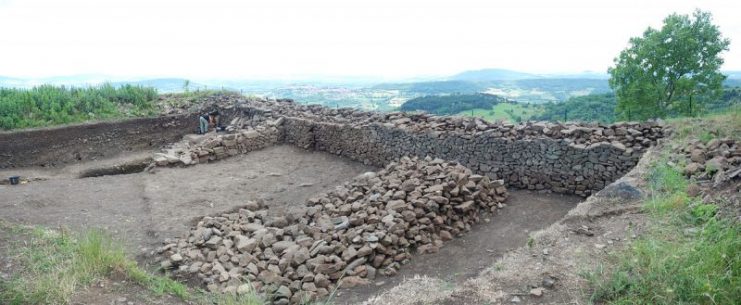
Caesar’s march began from Agedincum where his legions were stationed. He led a two-day march to Vellaunodunum, an oppidum on his way to Gergovia, which he besieged and took control of. He also took Genabum as it was his strategy to eliminate any enemies he met on his way to Gergovia in order to prevent being ambushed from the rear.
Vercingetorix soon learned about this plan and lifted his siege from Gergovia to meet Caesar in open battle at Noviodunum but by the time he got there, the inhabitants had already begun to surrender. However, when the people of Noviodunum saw Vercingetorix’s cavalry, they seized the gates and attempted to defend the city.
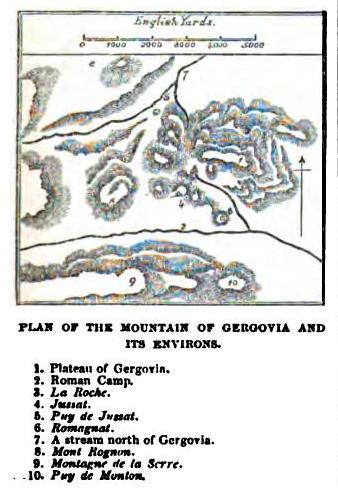
Roman soldiers quickly took control of the situation and organized safe passage for Caesar’s legions before engaging the enemy. Vercingetorix’s cavalry was forced to retreat back to the main army.
After taking Avaricum, the largest and most fortified town of the Bituriges, Caesar was able to replenish his supplies and regroup. He then started towards Gergovia, but the Gallic chieftain was ahead of him, both in thinking and with his troops.
After crossing the river Elave at Varennes, Vercingetorix destroyed all the bridges to prevent the Roman General and his troops from crossing. When Caesar learned of this, he camped near Varennes and divided his army into two; a large part was to continue the march south to Gergovia and the smaller part was to remain and hope that Vercingetorix would go after the larger army, not noticing any change in their number.
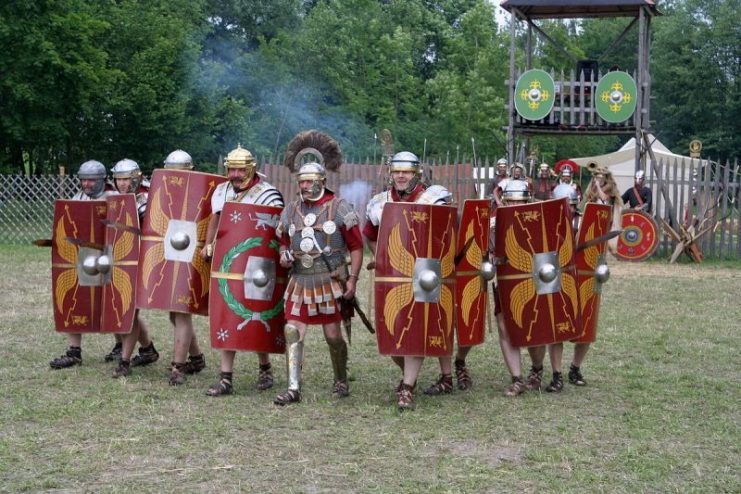
The unsuspecting chieftain followed the large troop heading south according to Caesar’s plan while the remaining few rebuilt the bridge hurriedly. They were rejoined the next day by the larger army, crossed the bridge successfully and marched on toward Gergovia. Vercingetorix, having realized the deception of the Roman Army, ordered his troops toward the mountainous settlement of Gergovia.
Caesar’s account states that Vercingetorix learned of his pact with the Aedui people to provide a 10,000-man troop for protection of Roman supplies. The Gaul then bribed and convinced the Aedui chiefs to fight on his side against the Romans.
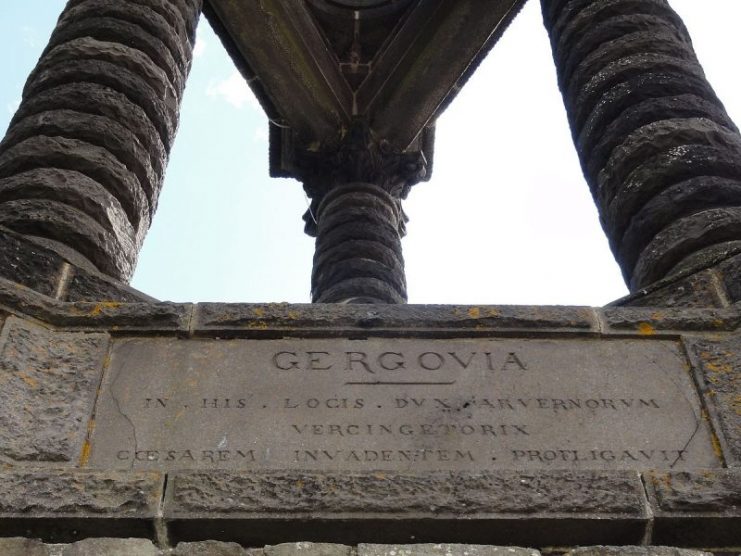
The march to Gergovia commenced. After days of marching, first up the river and then back, the Roman soldiers were now exhausted, and it took five days to reach Gergovia. On getting there, Caesar observed that it would be suicidal to organize a frontal attack on the town. Meanwhile, he also took into account that a small hill nearby that was fundamental to the town’s defenses was occupied by Gallic soldiers.
That night, he organized a raid, which was successful, and stationed two of his legions on the hill. He then ordered that a double trench, 12 feet wide, be dug to create a passage to his main camp. A barricade was also constructed to keep the Gauls away from their supplies.
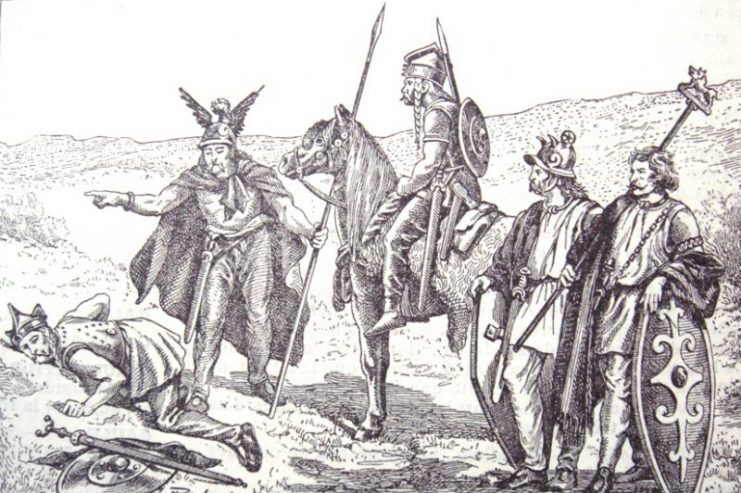
However, Caesar was taken by surprise and left in an embarrassing position when his troops accompanying their supplies were attacked by the same Aedui people whom he had conferred rulership of Gergovia on. With supplies dangerously low, Caesar removed four of his six legions and surrounded the Aedui army, conquering them and, retaking control of the Aedui leadership, he returned to Gergovia with pro-Roman Aedui troops and rejoined the remaining two legions which he had left in battle to hold off Vercingetorix’s army.
Vercingetorix discovered Caesar’s ploy to lure him from his vantage position on high ground, and he led a cavalry charge which crushed the Roman troops beneath them. The Gallic soldiers joined the infantry and pressed further against the already wounded Romans.
Caesar soon realized that he was fighting a lost battle after taking into account his losses on the battlefield; he ordered a retreat, fleeing towards the friendlier territory of the Aedui, signaling a victory for Vercingetorix and the Arveni tribe.
